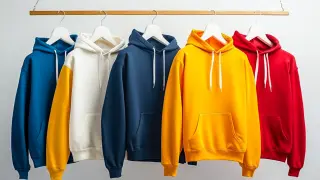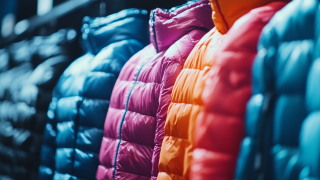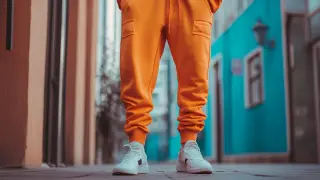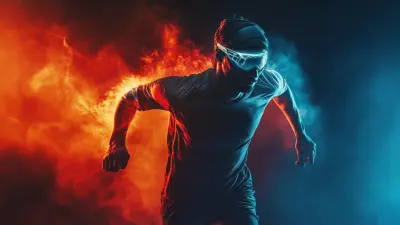
Today the demands of performance-based high-quality apparel are increasing with the evolution of sportswear. As per the findings of the recent market research, the global sportswear market is expected to reach about $500 billion even before 2025 due to the growing awareness among-consumers regarding fitness and wellness. Seamless Sportswear brings many advancements in sportswear technology, and it can prove to be the magic wand when it comes to enhancing performance and comfort levels in sports. Seamless designs are expected to make any activity seem second-skin feel, which will offer support for movement without being obtrusive by getting rid of seams that cause irritation and chafing.
DongGuan Xinteri Apparel Co., Ltd, we identify the importance of the right materials in producing seamless sportswear to suit the requirements of athletes with chronic illness. Our focus is on the middle to high quality products with the development trend in the industry moving to the end user being viewed as the one who reads the design of modern, functional, and long-lasting athletic wear. We focus on integrating fashion and outdoor sports by offering OEM and ODM services tailored to our customers, which include garment retail chain stores and wholesalers. While innovation continues in the industry, we will take the lead with our partners in the competitive market with advanced developments of seamless sportswear.

The kind of fabric chosen is critical to sportswear design and performance, determining not only comfort but also functionality. With the activewear market forecast to grow to an estimated USD 350 billion by 2025, brands are now focusing more and more on developing materials able to enhance athletic performance in addition to being stylish and sustainable. Innovative fabrics consisting of moisture-wicking blends and high-stretch materials are no longer uncommon; they help bring out the best in athletes while still maintaining comfort. For instance, research indicates that lightweight and breathable fabrics boost thermoregulation, thus allowing athletes to keep their body temperatures at optimal levels during workouts. Brands are also veering toward sustainable materials, such as recycled polyester and organic cotton, so as to capitalize on the surge in consumers demanding environmentally friendly choices. With the explosion of online sales and an increase in consumer awareness, brands are now incorporating principles of ergonomics in the design of their products fit for several body types. It has been reported that multifunctional clothing is an emerging trend which allows wearers to transition smoothly from casual wear to performance activities. This change highlights the importance concerning the selection of fabrics, not for its own sake but rather as an essential component that enhances the entire experience of wearing sportswear.
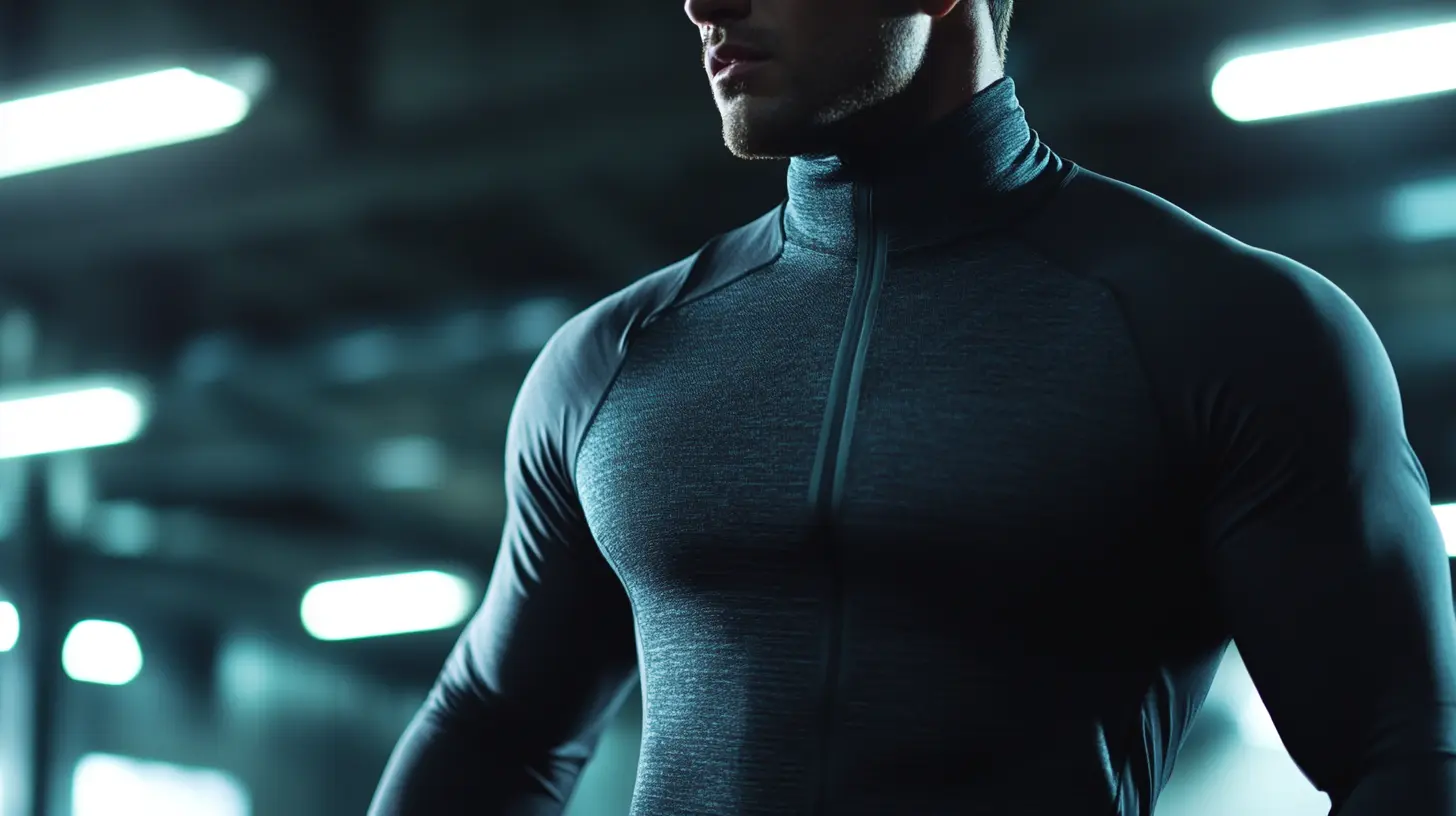
Seamless sportswear technology represents a paradigm shift in the athletic apparel industry, where the perfect marriage of performance and comfort is realized. One uniqueness of this advanced apparel is that it must be made using high-quality, lightweight materials devoid of any seams, which could otherwise lead to chafing and discomfort in sporting activities. Besides lending greater mobility, the seamless construction avails a much better fit to the athlete, thereby allowing him or her to stay focused on performance without distractions.
The other major harmonious feature of seamless sportswear is that they are usually made with moisture-absorbing and breathable materials. Such products are built more toward the mechanical transformation of fabric, expelling sweat from the skin so athletes can feel cool and dry during production exercise recovery and expedite recovery from any intense competition. Thermoregulation is achieved because of their breathability, allowing the athlete to maintain their optimum temperature even while working at their maximal exertion level. The growing need for technologically developed sportswear has resulted in brands opening stores in upscale malls to target clients on their search for quality products that match the current trend in active living and high-performance athletic wear.
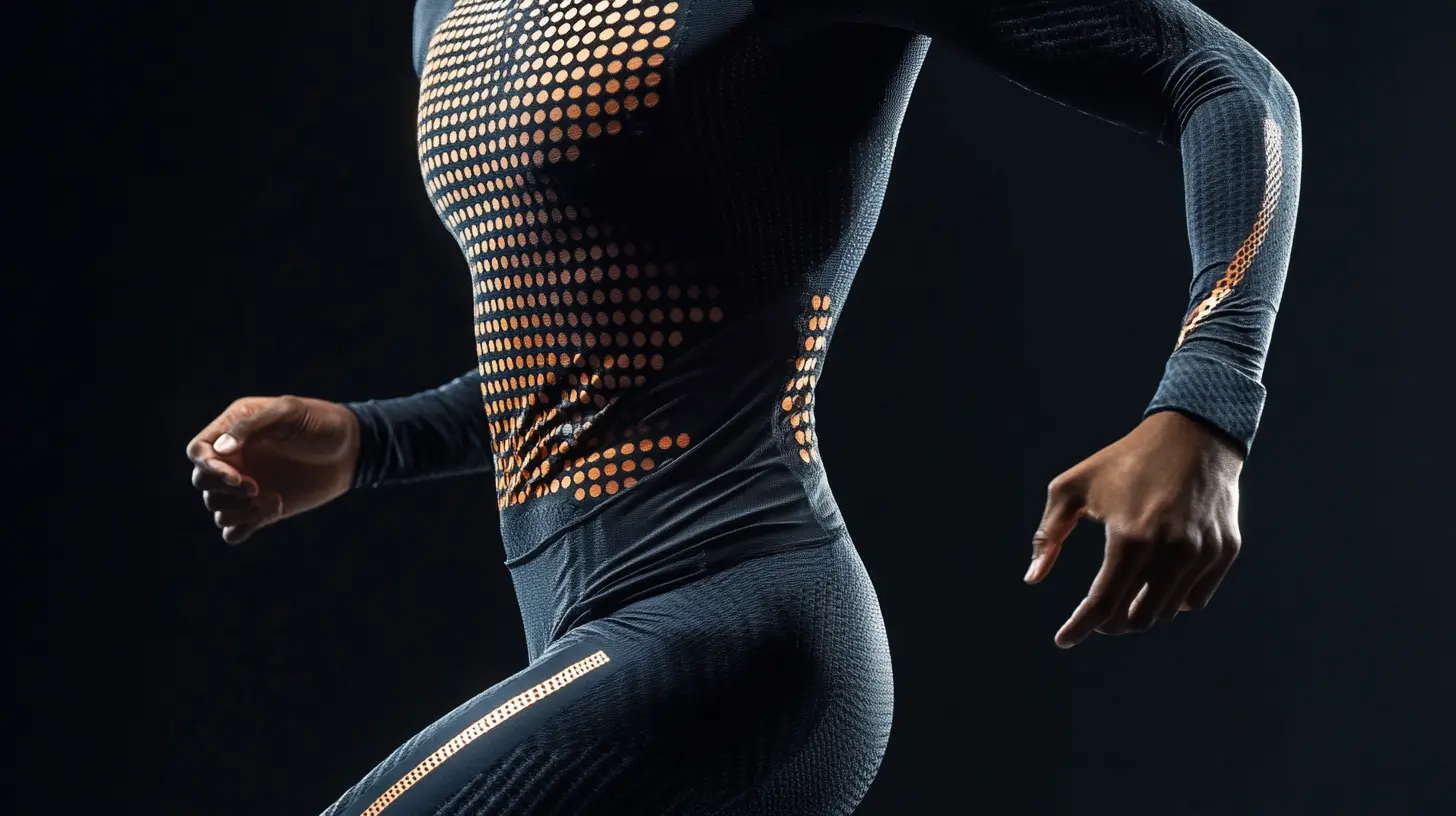
Moisture-wicking materials are the buzzword in sportswear, bringing revolution to this measurement while enhancing performance and comfort of the athletes. Innovative fabrics draw moisture away from the skin to evaporate quickly so that the wearer feels really dry even during extreme workouts. Athletes do not want to feel burdened by damp clothing as they push their limits. These technologies, combined with sport-specific, moisture-wicking fabrics, maintain the ideal body temperature and reduce the chafing caused by sweaty underwear.
Thus one should comprehend the science behind these materials because it is very important in choosing appropriate types of sportswear. Usually, moisture-wicking fabric is made of synthetic fiber like polyester or nylon. Its structure promotes moisture movement because it is not being generated in moisture movement by itself. These specially designed fibers create a much larger surface area that can take in and disperse moisture. This ideally keeps the body dry but also allows for more breathability to an extent that it uses air circulation to help regulate temperature: making athletes enjoy as much comfort as is possible so that they can concentrate on performance and not worry about sweat.
These go moisture wicking properties further than just being functional: it provides a factor to general health as well. This condition keeps the skin dry to prevent skin irritations or afflictions that develop because the skin has come in constant and extended contact with moisture. There remain options in variety - lightweight and most durable designs - so that an athlete gets to choose what best suits his needs and perform excellently still being comfortable. Very essential among serious sportspeople, such advanced technologies only improve the performance scale, and it is enjoyed more while engaging in sports.
Scrub off that "sweaty" look with this moisture-wicking fabric. Great for athletes when they push their limits doing workouts. Nothing sweeter by wearing a damp cloth while doing intense activities. Moisture-wicking technologies make sportswear reduce the body temperature achieved and limit the chances of having chafed skin, thereby creating a deeper level of concentration during performances.
Therefore, it is really necessary to understand the science behind such materials while actually choosing the right type of sportswear. Generally, moisture-wicking fabric is made of some synthetic fiber such as polyester or nylon. Its structure is promoting moisture movement because it is not generated in moisture movement during itself. These specially designed fibers create a much larger surface area that can absorb and disperse moisture ideally to keep the body as dry as possible while providing more breathability to an extent using air circulation to help regulate temperature: making athletes enjoy as much comfort as possible to concentrate on performance rather than think of sweat.
Moisture-wicking properties go a lot beyond being just functional; it provides a factor toward general health too. This keeps the skin dry to prevent skin irritations or ailments that result from constant long exposure to moisture. There are varieties in examples-lightweight but most durable designs-so that an athlete has the option to choose what best suits his needs and perform excellently still being comfortable. Very important among serious sportspeople, very advanced technologies only improve upon the performance scale, which is to be enjoyed even more while being engaged in sports.

The stretch and flexibility of an activewear fabric are perhaps the two most important components affecting comfort and overall performance. Such freedom of movement afforded by advanced material in sportswear design enables the athlete to work harder during training and competition. Highly elastic fabrics not only accommodate the normal movement patterns of the body but, through an increasing of compression strength, support the muscles, decrease fatigue over time, and improve performance.
The right degree of stretch and compression in activewear also increases blood circulation-all the more valuable for athletic performance. Garments made from spandex or nylon block are designed to stretch along with the body rather than one against it. Hence, from an enjoyable standpoint, athletes have freedom during workouts-standing in plank position, for instance, or relaxing into child's pose. All of this benefits the athlete as it allows him or her to focus on one's performance without feeling hampered or distracted by clothing.
With technological advancements in the field of sportswear itself, attention is now fully on the advanced research and innovations within the fabric constructions' capability. This includes a new endeavor to develop moisture diffusion properties to be allied with the fabric's natural stretching mechanisms. This affords every wearer a dry and comfortable environment while also supporting the stretching of fabrics, thus preventing their loss of shape and performance through time. By choosing the activewear that stands behind the concepts of stretch and flexibility, a big difference can be made between achieving max performance in comfort or just outright discomfort.
Natural fabric versus synthetic fabric makes a huge difference in performance and comfort as far as sports apparel is concerned. According to a report by the Textile Research Journal, these natural fibers possess inherent property like cotton and wool in being breathable and moisture absorbent. Cotton is really soft, comfortable to wear, yet holds moisture and would lead to discomfort during an intense workout. On the other hand, the same report notes that a wool can trap and wick moisture effectively, allowing a good balance between comfort and performance.
Synthetic fabrics used in sportswear include polyester and nylon and they are fast becoming popular in this type of sportswear because they are worn away and moisture wick. A survey by the Sports and Fitness Industry Association discovered that nearly 70% of the active persons surveyed opt for synthetic material in the performance apparel, and this is because the materials are very light and dry quickly. For example, polyester absorbs moisture to the tune of 5% of its weight, rapidly evaporates it, and keeps athletes dry and comfortable.
The adoption of seamless sportswear further confirms the importance of this aspect of material selection. Manufacturers are now adopting this technology to produce seamless knits in synthetic fibers to make improvements in stretchability and reduce the chafing suffered by several athletes. Research conducted by the Institute of Sports Science indicates that such innovations could help to improve overall user satisfaction by 30% during physical activity compared to conventional techniques. The ultimate understanding of natural as well as synthetic fabric nuances, they're going to mean the difference between the latest performance apparel that athletes will use to push their limits and get the most out of themselves.
Greater breathability has also compelled new experiences in comfort and performance for athletes. As indicated in the Technavio report, the global sports apparel market is expected to see growth of over $100 billion by 2025, driven primarily by material technology innovations. Some of the most notable developments include moisture-wicking fabrics aimed at improving temperature regulation during vigorous physical activity. These fabrics pull moisture away from the body for faster evaporation and thus cool a person down.
Recent studies have shown that improved temperature regulation can contribute 15% toward athletic performance. Fabrics made from a new generation of polyester blends and nylon are now engineered with microperforations or mesh-like attributes, which carry the promise of contributing to airflow and durability. A research paper published in the Journal of Sports Sciences highlights that lightweight and breathable garments are capable of lowering the body temperature of athletes, thus enhancing their endurance and resist fatigue during performance.
On the other hand, further integration of thermoregulation is evolving with the innovation of phase change materials-PCMs-into sportswear. The phase change materials absorb, store, and release heat as required, leading to an optimal microclimate for athletes. A case study by the American College of Sports Medicine found enhanced comfort during long training sessions for athletes wearing clothing with PCM technology, by approximately 10%. With the ever-increasing demand for high-performance sportswear, it is likely that the next generation of breathable fabrics will set new standards of comfort and efficacy in sports apparel.
Seamless construction has a profound effect on the user experience in sportswear. Chafing and discomfort are traditional evils in the world of sportswear: the seams tend to rub against the skin during vigorous exercise. Seamless construction simply takes away these friction points. The marvelous feeling allows athletes to put their total concentration on their performance, leaving one less distraction in their training. This technology also affords a closer fit to the athlete by establishing a second-skin effect, which seriously elevates comfort yet minimizes distraction.
Additionally, seamless fabrics are manufactured through cutting-edge textile technologies designed for breathability and moisture-wicking. The absence of seams actually increases the flexibility of the material, allowing for more movements along with the body. Such a feature is certainly an added advantage in high-endurance sports where flexibility is key. Seamless sportswear contributes to comfort and, thus, performance by ensuring that athletes remain cool and dry, especially for longer workout sessions.
With much to comment on, seamless construction is very pleasing to the eye. Without the visible lines and bulk of seams, these garments most often have an attractive, sleek, and modern appeal that many athletes appreciate. This pleasing form of finish enhances self-esteem in users, which further enriches their overall experience of working out. Given the continued advancement of seamless technologies, it will surely remain one of the driving forces in the future of performance-boosting activewear.
When choosing sportswear, one must take into account the demands of different activities and the attendant environments. With this in mind, cooler climates are best served with fabrics that provide insulation while still allowing the body to breathe. This refers to moisture-wicking fabrics that will keep you dry without causing you to overheat. Layering is of utmost importance here; a light base layer will help in the regulation of body temperature, while a waterproof outer layer will help ward off wind and rain.
Flexibility and comfort remain the most important features in workout wear for the gym. Keep your eye out for leggings and shorts made of stretchy fabrics that allow an entire range of movement, spandex blends being one good example. Another consideration is that certain sports put different functions on the material: in high-intensity sessions, the compression wear may actually assist with muscle contraction and circulation, while for yoga sessions you may want to use softer, less restricting fabrics that allow for easy movement.
In warm conditions, lightweight and UV-protective fabrics are best for recreation in open air. They not only enhance cooling of the body but also protect the skin from damaging sun rays. On the other hand, cold-weather sports require thermal insulation, combining base layers that trap heat and jackets meant to repel foul weather. Knowing these subtleties allows athletes to get the finest in sportswear to guarantee comfort and performance so they can get on with doing what they love.
Stretch and flexibility are crucial as they impact comfort and overall performance, allowing athletes to move freely and support their muscles, reducing fatigue during workouts.
Fabrics like spandex or nylon blends are recommended as they offer excellent elasticity and fit, moving with the body rather than constricting it.
The right balance of stretch and compression in activewear can enhance blood circulation, which is vital for improving athletic performance and reducing muscle fatigue.
It’s essential to consider the specific requirements of the activity, such as the need for insulation in cooler climates, breathability, and flexibility for different types of workouts.
For running in cooler climates, moisture-wicking fabrics that offer insulation without overheating are ideal. Layering with a thin base layer and a waterproof outer layer is also recommended.
Compression garments made from stretchy materials are best for high-intensity workouts, as they support muscles and enhance blood circulation.
For yoga sessions, it's best to choose softer, more forgiving fabrics that promote ease of movement and comfort.
Lightweight, UV-protective fabrics are ideal for warmer conditions, helping to keep the body cool while protecting the skin from sun exposure.
Moisture-wicking properties keep the wearer dry and comfortable, complementing the stretchiness of the fabric and maintaining its shape and performance over time.
Understanding environmental conditions helps athletes choose appropriate sportswear, ensuring optimal comfort and performance that allows them to focus on their activities without distraction.
